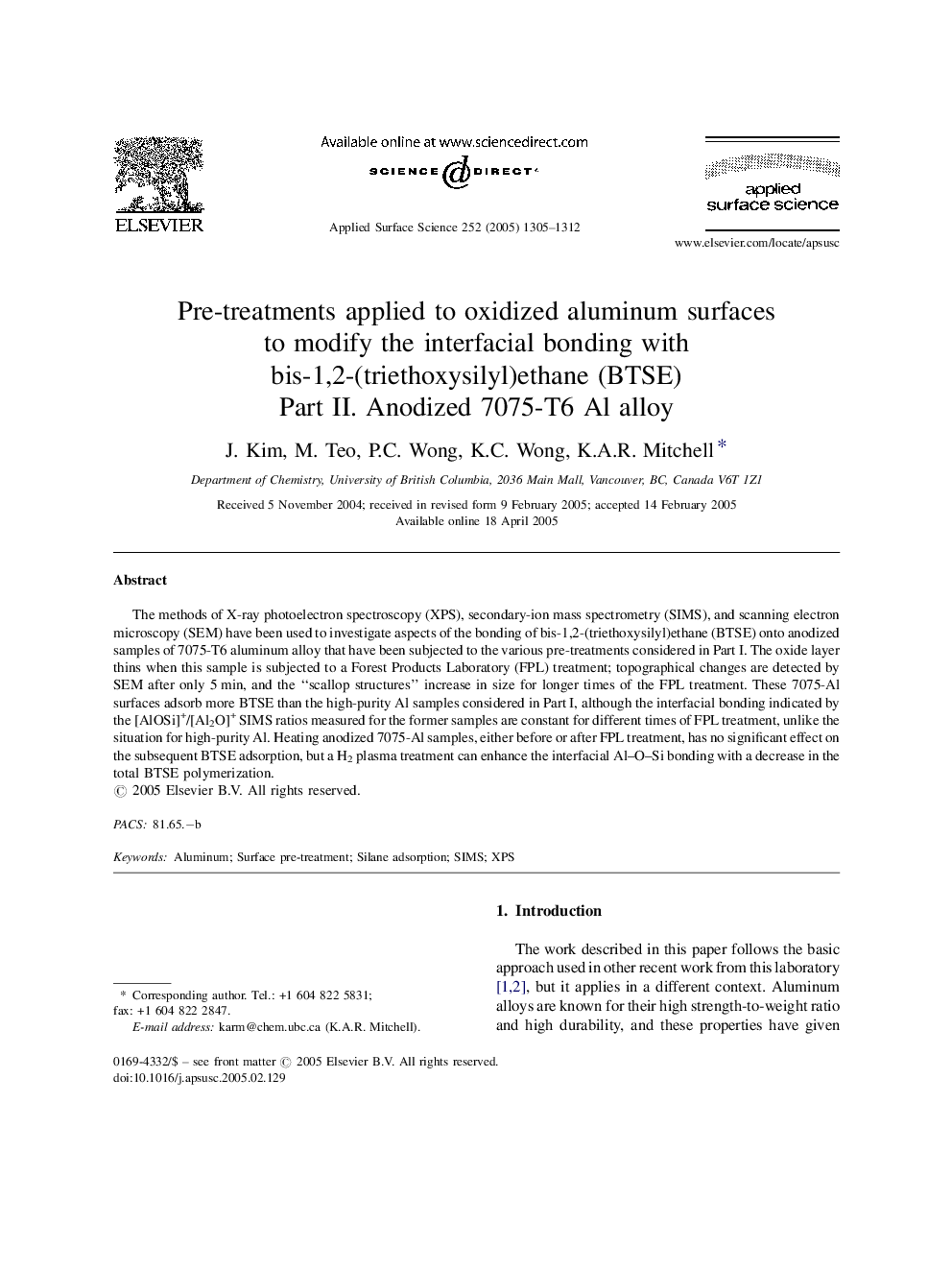| Article ID | Journal | Published Year | Pages | File Type |
|---|---|---|---|---|
| 5370473 | Applied Surface Science | 2005 | 8 Pages |
The methods of X-ray photoelectron spectroscopy (XPS), secondary-ion mass spectrometry (SIMS), and scanning electron microscopy (SEM) have been used to investigate aspects of the bonding of bis-1,2-(triethoxysilyl)ethane (BTSE) onto anodized samples of 7075-T6 aluminum alloy that have been subjected to the various pre-treatments considered in Part I. The oxide layer thins when this sample is subjected to a Forest Products Laboratory (FPL) treatment; topographical changes are detected by SEM after only 5Â min, and the “scallop structures” increase in size for longer times of the FPL treatment. These 7075-Al surfaces adsorb more BTSE than the high-purity Al samples considered in Part I, although the interfacial bonding indicated by the [AlOSi]+/[Al2O]+ SIMS ratios measured for the former samples are constant for different times of FPL treatment, unlike the situation for high-purity Al. Heating anodized 7075-Al samples, either before or after FPL treatment, has no significant effect on the subsequent BTSE adsorption, but a H2 plasma treatment can enhance the interfacial Al-O-Si bonding with a decrease in the total BTSE polymerization.
